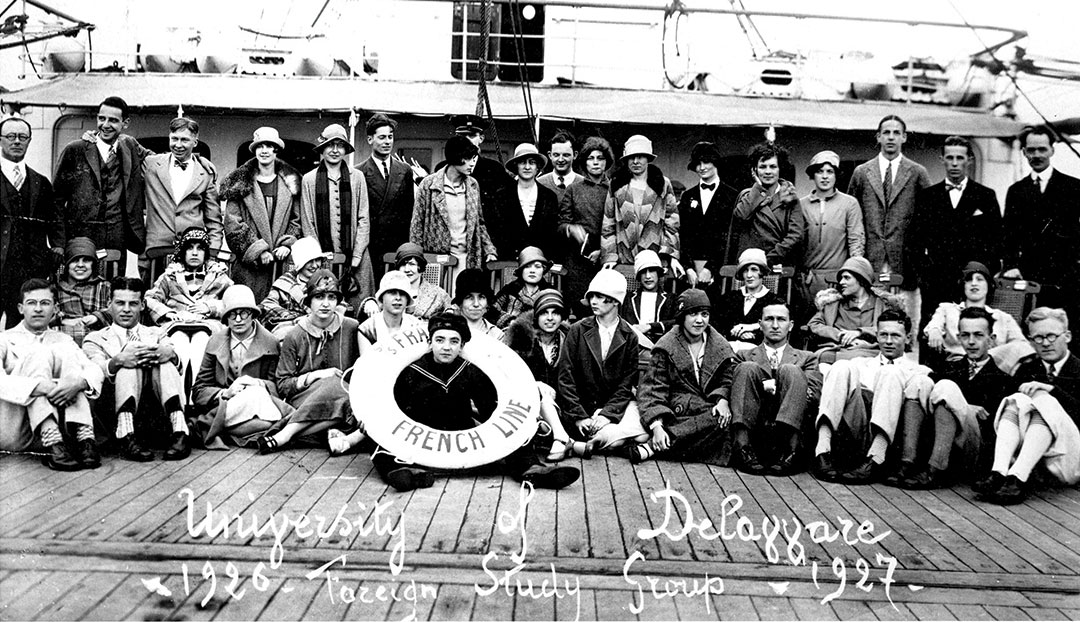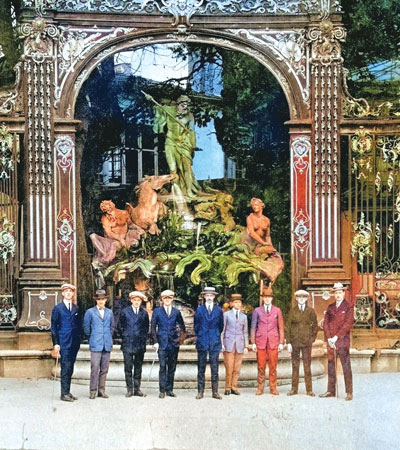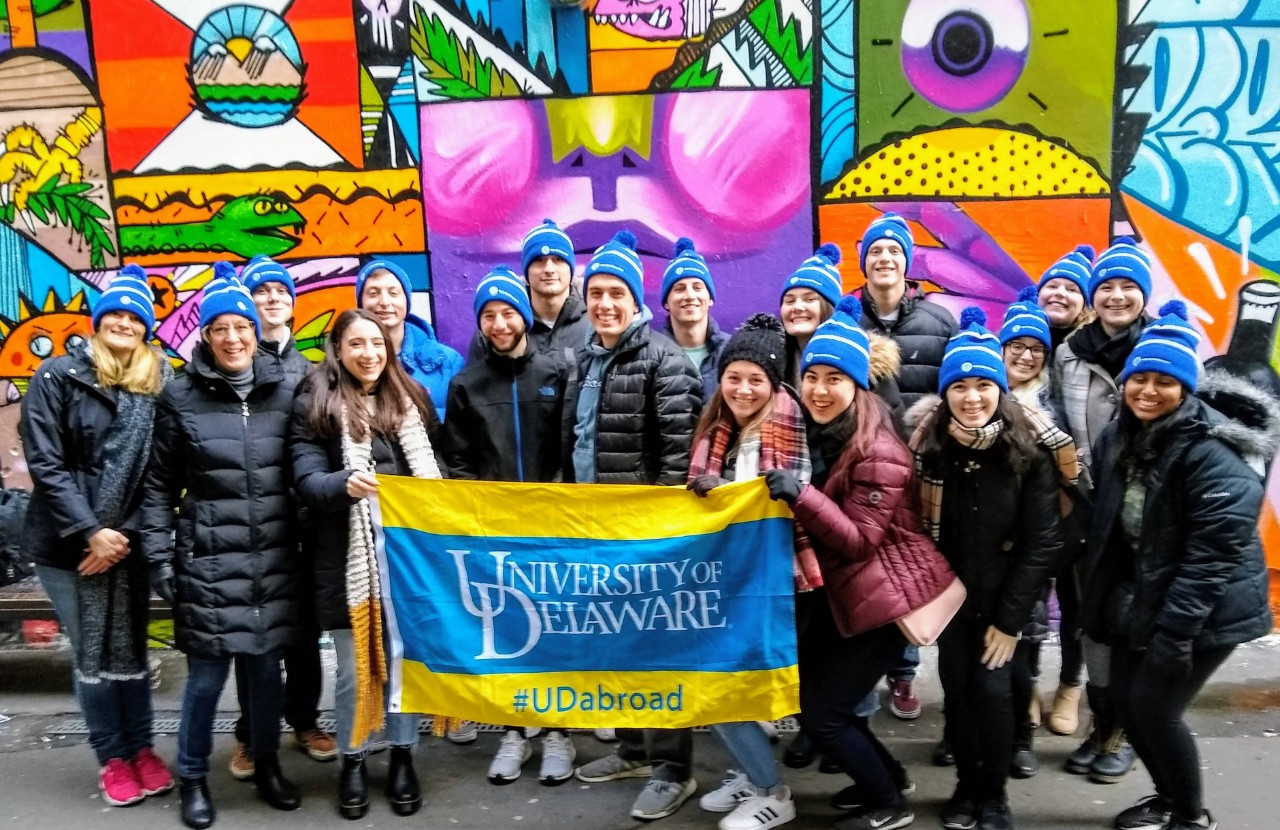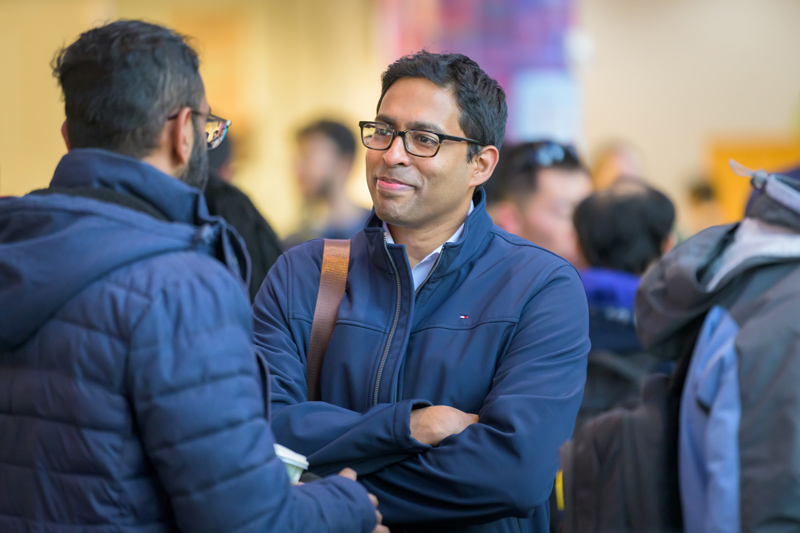
Video celebrating the University of Delaware's 100 years of study abroad: youtube.com/watch?v=nnsxzSDs1uo

From Delaware to the World
The University that launched study abroad 100 years ago continues a rich tradition of global engagement
July 08, 2023
University of Delaware students are blackwater rafting through glowworm caves in New Zealand. They’re dancing around 20-foot bonfires during sacred festivals in India. They’re hiking mountains in Tanzania, connecting with ancient civilizations in Brazil and snorkeling through underwater volcanoes in Hawaii. Around the globe, they are meeting the most exhilarating, awe-inducing moments of their lives.
Such transformative study abroad experiences are par for the Blue Hen course. This is an institution with 100 innovative program options in 40 countries, a University that kept cross-cultural learning alive even when Covid-19 torpedoed the objective at schools around the country. Unless you’ve been living under the Rock of Gibraltar (which Blue Hens have also climbed), you already know UD is a globally recognized leader in international education, consistently named a top-tier choice for study abroad.
And what's more—we were first.

In 2023, the University celebrates the 100th anniversary of its trailblazing study abroad program, which set the standard for institutes of higher education around the globe. Naturally, there will be commemorative events and posh galas, opportunities to mark one century of making the world just a bit smaller—and, arguably, quite a bit better.
“Study abroad increases marketability in the workplace,” says Ravi Ammigan, a Mauritian citizen of Indian descent and the associate provost for international programs at UD. “Through our programs, students build intercultural competence, broaden their worldview, acquire new language skills, expand their networks—all things that enrich society."

That was, indeed, the goal of Raymond Kirkbride, an Army veteran who’d drive ambulances in France during World War I. The foreign language professor fervently believed that cross-cultural understanding was key to preventing future global onflicts. So, at the dawn of the roaring 20s, he presented a pioneering diplomatic experiment: the Foreign Study Plan.
The 28-year-old wanted to accompany a group of Blue Hen students back to France, where the young men (only men, in those early days) would earn credit toward their degrees and become more empathetic humans.
The idea left some clutching their pearls. Critics feared, according to newspaper articles at the time, that the nightlife of Montmartre might “blast the educational hopes of some fond parent back in the States.” But the Plan received support from UD President Walter Hullihen and then-U.S. Secretary of Commerce Herbert Hoover, who, like Ammigan, recognized the need for internationally minded employees in a world of increasing global commerce. A particularly poetic student reporter labeled the proposal “a solid brick in the long-sought foundation of world peace.”

On July 7, 1923, eight eager scholars dressed in tweed trousers piled onto a French ocean liner for a year-long adventure. The group studied at various institutions, mingled with dignitaries, and attended 26 operas. (Critics needn’t have worried; reports from Kirkbride indicate impeccable behavior.) Buzz spread quickly. One journal labeled the experiment among “the most interesting in international commercial education yet attempted by an American university.” In the years that followed, 127 peer institutions, including Princeton and Harvard, sent their own students on the UD experience. One described his memories as the “rosy souvenir of a nice dream.”
And then the dream went dark.

After 25 years, the influential program, which had expanded briefly into Germany and Switzerland, was canceled. Post World War II conditions coupled with a change of leadership at UD meant a waning appetite for study abroad. But graduates of the Foreign Study Plan kept the legacy alive. One member of the original eight established an organization for world peace, the Friendship Foundation for International Students, that still exists today.
Still, members of the University community lamented this lapse in programming for decades. In 1971, UD’s Community Design Commission called the pause “a paradox...and a rather embarrassing one.” By the end of the following year, visionaries on campus could take it no longer. They organized a relaunch—and raised eyebrows nationwide in the process.
“The University was ahead of its time,” says Lisa Chieffo, AS88, longtime associate director for study abroad. “When the vast majority of schools were pursuing semester-long programming, we found a way to serve a broader swath of the student population.”

UD had recently established Winterim break (now the five-week Winter Session between semesters), and Blue Hen leaders recognized that scheduling shorter-term trips in this window would open study abroad to more students—namely, those with commitments that precluded a full semester away. Blue Hen faculty and staff became imbued with renewed passion for the cause. Campus legend has it that late Professor Bill McNabb, known by colleagues as “Mr Study Abroad,” once jumped off a bus when he spotted in a shop window a garish jacket made of parachute material and checkered with the flags of various nations. He wore it with pride while evangelizing the transformative power of travel.
“We were an outlier for a very long time,” says Matt Drexler, UD’s director of study abroad. “Peers in the industry thought short-term programs were glorified field trips—can you really facilitate cross-cultural learning in a matter of weeks? The answer is: Yes. We see so much growth.” (Since the relaunch of study abroad at UD, nearly 24,000 Blue Hens have experienced this growth.)

Part of the magic, Drexler adds, is that students on these trips aren’t left to fend for themselves. They are accompanied abroad by globally networked faculty directors who enable access to extraordinary experiences. Just ask the design students who’ve worked behind-the-scenes at Paris Fashion Week, or the budding physicists who’ve peered into Switzerland’s Large Hadron Collider (the world’s most powerful atom smasher). Due partly to these efforts, institutions around the country have since taken up the model.
“We’ve got this exceptional history,” says Ammigan. “But it’s not enough to bask in the glory of what we started. We are using this legacy to innovate a path forward.”
Today, the University offers short and long-term programming from Barbados to Budapest, Malta to Martinique. The trips are both traditional (touring European architecture) and unconventional (learning hospitality aboard a working cruise ship). Most importantly, the lineup is dynamic, forever evolving to meet the needs of a changing world.

Consider UD’s successful navigation of Covid-19. During the worst of the pandemic, study abroad coordinators engineered remote internship opportunities with overseas partners. When programming relaunched during the 2021-2022 academic year, schools nationwide experienced a 91% decline in participation, but thanks to robust contingency planning and transparent communication, UD saw only a 50% drop. And the University has since wished bon voyage to some of its largest cohorts.
Of course, the mission of internationalization goes well beyond study abroad. At UD, a place that boasts 300 global partnerships, research collaborations lead faculty from deep below the icy surface of the South Pole to the far reaches of the universe (the International Space Station has hosted several Blue Hen experiments).

Meanwhile, UD’s international population represents more than 3,000 people and more than 100 countries. But the University isn’t merely doling out course schedules and wishing these scholars the best. To nurture their acculturation—which boosts the cultural competency of all students on campus—UD offers more than 100 engagement opportunities each year. It also conducts extensive research on how best to support this community, redefining the professional discourse worldwide. As a result, the office dedicated to this demographic regularly ranks top 20 globally in international student satisfaction, per data from the International Student Barometer benchmarking tool.
Beyond the tangible outcomes of this work—bridges engineered in Bolivia, schools built in Burkina Faso, oral histories collected in Peru—leaders on campus infuse global perspectives into every classroom, every office, every laboratory on campus. “It’s embedded into the very muscle of the University,” Ammigan says, so that even those students who never venture outside Newark graduate as broad-minded citizens of the globe, primed to tackle society’s biggest challenges.
Success in this arena is attributable to the full support of many—including UD’s president and provost, Blue Hen students willing to step outside their comfort (and time) zones and, of course, eight adventurous young scholars who launched it all, 100 years ago.
“It’s easy to lose sight of, because we’re shuffling papers like crazy to make it happen,” Drexler says. “But all these years of international education at UD have absolutely contributed to a better, more understanding world—and we have a million anecdotes to show you how.”
Contact Us
Have a UDaily story idea?
Contact us at ocm@udel.edu
Members of the press
Contact us at 302-831-NEWS or visit the Media Relations website


